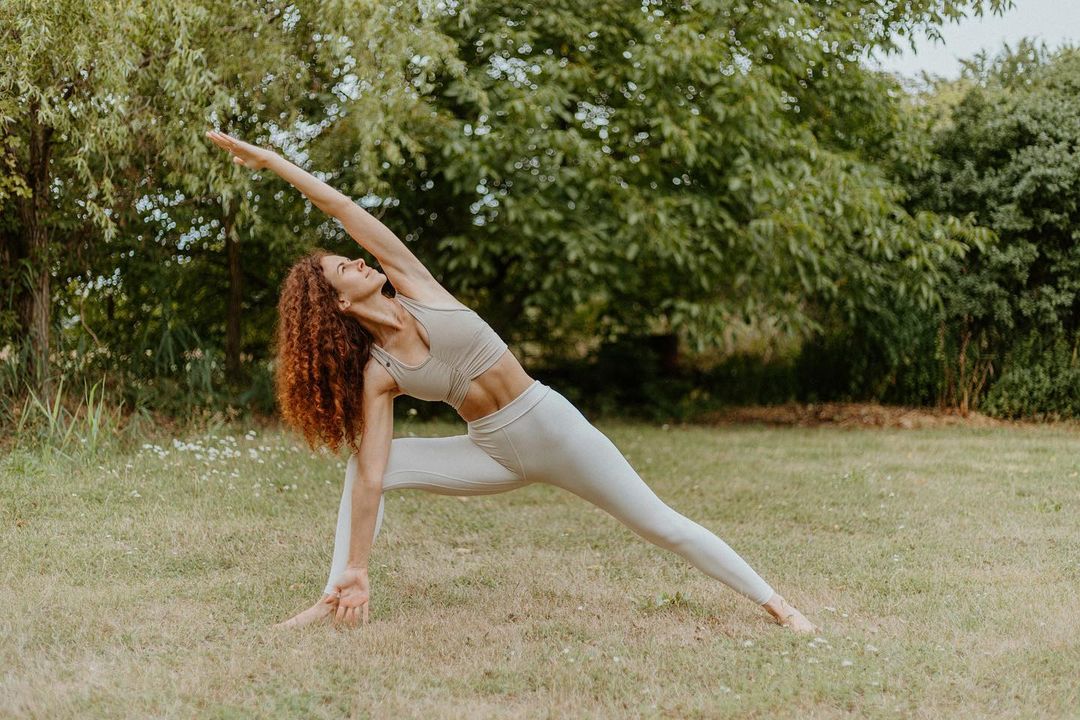We all deal with anxiety sometimes. It is a rational response to stressful or dangerous situations.
However, some also struggle with anxiety disorders, which are often not triggered by outside factors or circumstances and are a serious mental health condition, which should be approached with care. They are a much more serious issue than isolated anxiety attacks, and can have a deteriorating impact on the patient’s everyday life.
Although therapy and medication help with anxiety disorders and panic attacks, there are also self-healing alternatives which may supplement standard methods of treatment.
Yoga therapy is more and more accepted as a supplemental treatment for those who struggle with anxiety disorders and panic attacks. Read on to find out why and how yoga helps, and which poses you can practice when you want to relieve anxiety.
Yoga for Anxiety
Yoga primarily aids in relieving anxiety by calming the body. When you’re experiencing anxiety, the body goes in “fight-or-flight” mode. Your sympathetic nervous system is more active, and you are releasing an increased level of adrenaline and cortisol, the stress hormone. Yoga asanas activate the parasympathetic nervous system, which immediately has a physical effect on the body, calming the sympathetic response, and bringing a sense of relaxation. When our body is more relaxed, our mind comes to a more tranquil state as well.
Yoga may also help by teaching us to observe and recognize our triggers and patterns. By meditating and bringing our attention within, we can learn what thoughts or experiences lead to anxiety and panic attack. Then, we are able to better manage those situations in the future, by reacting as soon as those triggers begin to happen. The breathing techniques, meditation and asanas can also become healthy copy mechanisms, especially if we build a continuous practice habit.
When we discuss yoga and its impact on anxiety, it’s important to note we are also talking about the spiritual aspect, or more accurately, an energetic one. Although yoga does have an impact on our nervous system, it also aids in releasing energetic and emotional blockages. Deep, unresolved traumas are often the key source of anxiety disorders. One way we can promote our own healing is by physically releasing these emotions.
Yoga Poses For Anxiety
When doing yoga for anxiety, your intention and approach have a huge role.
Before starting your class, take a moment to decide that relieving anxiety will be your key goal in the practice.
It is possible some difficult emotions will arise when practicing with full awareness of what’s happening within you. For this reason, make sure you are gentle towards yourself, that you don’t push yourself further than comfortable, and allow the emotions to come out. Even if that means you end up crying and perform only Corpse Pose, that’s completely fine. Asanas are only a tool and not the final goal in this type of dedicated and intentional practice.
Having these key ideas in mind, here are some poses that may help you relieve anxiety, both immediately and long-term.
Tree Pose is a standing pose that challenges your balance, encouraging you to turn your focus inward. It promotes concentration and body awareness, and may distract your mind from anxiety and negative thoughts.
Triangle Pose accesses the parasympathetic nervous system, reducing the fight or flight response and slowing down your heart rate. This may help your body to relax, which will also have a positive impact on the mind.
Child’s Pose is a restorative pose that slows down heart rate, and brings a sense of comfort, safety and grounding. It also releases tension from the back and the neck, which is where we often tense up when we feel anxious.
Seated Forward Bend is a fantastic pose to calm your mind, and it releases tension from the upper body, having a similar effect as Child’s Pose. It’s a great asana to add into your practice when you need a moment to catch your breath and return to your intention.
Camel Pose is a heart-opening asana which improves blood circulation in the body, and helps activate the Heart Chakra and release your emotions.
Bridge Pose simultaneously opens your heart and works as a mild inversion. Like Camel Pose, it opens your heart center, helps release emotions that have been bothering you, but also activates the parasympathetic nervous system and brings more blood and oxygen to the brain, which may help you better manage anxiety.
Butterfly Pose is a grounding asana which may be helpful when you want to enter a meditative state. For centuries, it has been considered one of the best yoga poses for meditation, as it is symmetrical, grounding and encourages proper alignment in the spine.
Upward Salute is a standing asana that’s often done at the beginning of a Sun Salutation. It encourages energy to move freely in the body, and may help improve your self-esteem and sense of personal power.
Corpse Pose encourages you to surrender and relax, having a profound effect on your whole physical and mental state. When performed at the end of your practice, it allows you to integrate everything you’ve done in the class, and to cool down and recover. It may be especially helpful for anxiety when paired with Yoga Nidra practice, which can simply mean you are bringing your awareness to each part of your body, from your toes to the top of your head, and consciously relaxing them. You can also follow a guided Nidra meditation if its difficult to do this on your own.

- by Team Zencore
How Yoga Can Reduce Anxiety
- by Team Zencore



Master Stillness In Yoga - to Manage Stress and Return to Your True Self
Yoga As A Tool For Overcoming Addictions